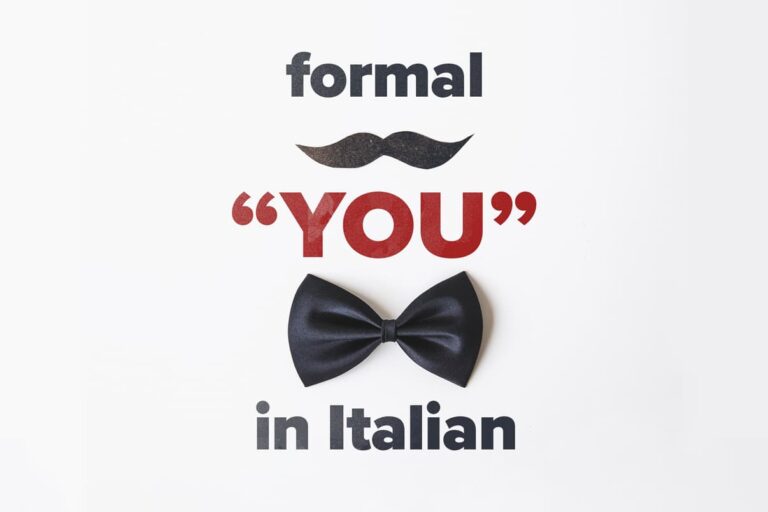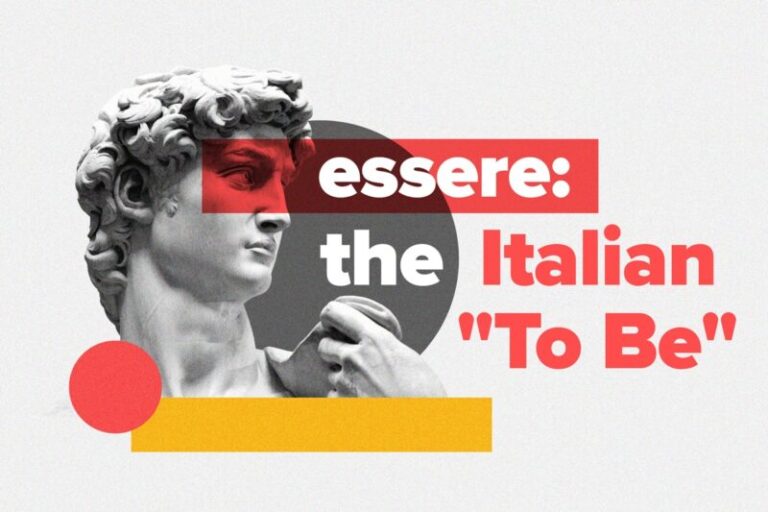How and When to Use “Stare” in Italian
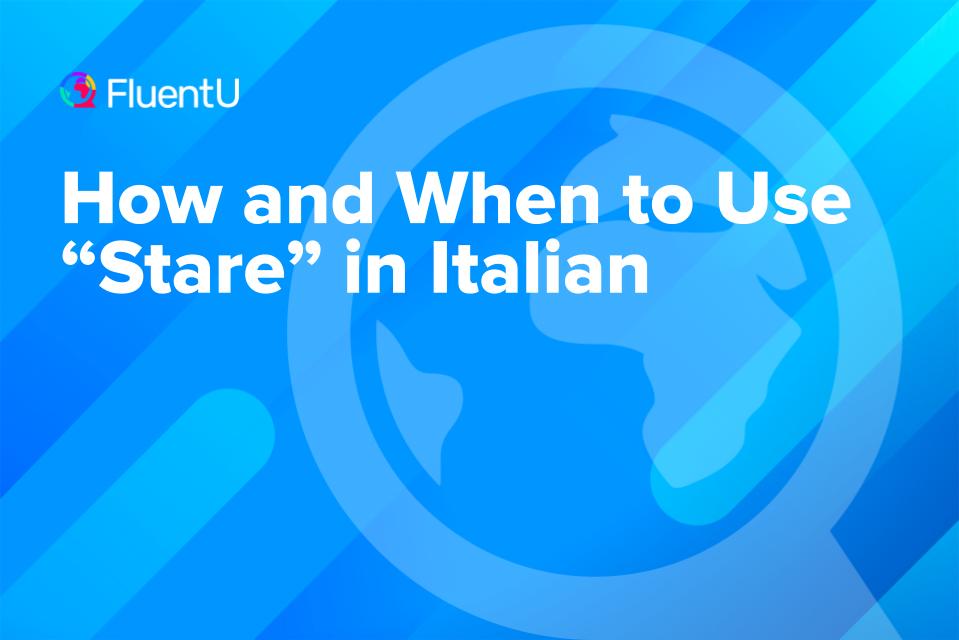
The irregular Italian verb stare is a versatile and essential component of everyday conversation. Often translated as “to stay” or “to be,“ stare can convey a range of meanings, from indicating physical location to expressing emotional states.
You might recognize it from one of the most common phrases in the Italian language: Come stai? or the more formal Come sta? Both of these phrases use stare to ask “How are you?” but the direct translation is “How are you staying?”
Understanding how to use stare is key to expressing yourself clearly and accurately in Italian, so let’s dig into its various uses and conjugations.
Download: This blog post is available as a convenient and portable PDF that you can take anywhere. Click here to get a copy. (Download)
Conjugating the Italian Verb Stare
Here are the conjugations of stare in some of the main verb tenses:
| Subject Pronoun | Present Tense (Indicativo Presente) | Past Tense (Passato Prossimo) | Imperfect Tense (Imperfetto) | Future Tense (Futuro Semplice) |
|---|---|---|---|---|
| io | sto | sono stato
sono stata | stavo | starò |
| tu | stai | sei stato
sei stata | stavi | starai |
| lui/lei/Lei | sta | è stato
è stata | stava | starà |
| noi | stiamo | siamo stati
siamo state | stavamo | staremo |
| voi | state | siete stati
siete state | stavate | starete |
| loro | stanno | sono stati
sono state | stavano | staranno |
For a full list of conjugations of stare, visit verbi-italiani.info.
Ways to Use Stare in Italian
Stare is used in a variety of ways, and we’ll go over each one below. As there are multiple applications for using this verb and lots of situations where it can come up, it helps to see how native speakers use it.
For example, you could read Italian literature, or you could also try using an immersion program like FluentU to search for this verb and find videos where it appears in context.
FluentU takes authentic videos—like music videos, movie trailers, news and inspiring talks—and turns them into personalized language learning lessons.
You can try FluentU for free for 2 weeks. Check out the website or download the iOS app or Android app.
P.S. Click here to take advantage of our current sale! (Expires at the end of this month.)
It can be a little difficult to get a handle on words with multiple meanings when you’re learning another language. Just remember that context is key. Paying attention to when and how this verb is used by people who know the language well can make a big difference.
To Talk About States of Being
Remember Come stai? Answering this question uses stare as well. Here are some examples of phrases that you might use to answer that question, shown in dialogue format.
Example Dialogue 1:
Ciao! Come stai? (Hello! How are you!)
Sto bene, grazie. E tu? (I’m fine, thanks. And you?)
Tutto bene! (Everything’s fine!)
Example Dialogue 2:
Ah, Marco, non ti senti bene oggi. Come stai? (Ah, Marco, you don’t look so good today. How are you?)
Sto male. Ho la tosse. (I’m sick. I have a cough.)
La tosse? Che peccato! (A cough? That’s too bad!)
These dialogues both used the conjugation sto, which means “I stay” when translated literally. In these contexts, however, it’s used to express states of being such as feelings or health.
It helps to think of stare as a way to declare your “status.” One of the Italian words for status, stato, even doubles as one of the conjugations for the verb (specifically, in the past perfect tense).
To Indicate Location
Remember that stare can be used in a literal sense, to tell where a person is physically staying. This is pretty straightforward: Just use the verb to indicate where a person might be staying or living at a particular moment.
Here are some sample sentences for that context:
Tu stai a Milano stasera? (You’re in Milan this evening?)
Noi stiamo a casa di mia madre. (We’re staying at my mother’s house.)
As a Command
When using stare as a command, you’re instructing or telling someone to be a certain way—to take on a specific state, as it were. Here are some examples of how that might look in practice:
Stai fermo! (Stay still!)
Stai attento, per piacere. (Be careful, please.)
In the Present Continuous
The present continuous tense is used rather specifically, to indicate something that’s happening in the moment. It doesn’t get a lot of use in Italian, but it’s one of the major uses of stare.
In this tense, you use stare in conjunction with whatever the person is doing to show that it’s being done at that very moment. To form this tense, stare is conjugated in the present tense with the action verb in the gerund form.
Let’s look at some examples:
Io sto andando al cinema. (I’m going to the movies.)
Noi stiamo mangiando. (We’re eating.)
To Talk About Appearance
Finally, you can use stare to express how things appear. This is pretty straightforward: in context, stare says how something looks to a speaker.
Here are some examples of this in practice:
Quella giacca ti sta proprio bene. (That jacket looks really good on you.)
Come sto? (How do I look?)
Now that we’ve covered the variety of ways you can use this verb, let’s look at some finer details.
Confusing Verb Pairs
The verbs you’ll run into the most often when talking about states of being are stare, avere and essere , which can all mean “to be.” Let’s take a look at when to use each of these verbs.
Stare vs. Avere
As we’ve gone over, stare can be used to talk about a person’s situation or state of being. However, when talking about certain feelings or states, the use of the verb avere (to have) is required instead.
For example, when you’re hungry or thirsty, you say:
Ho fame. (I’m hungry. Literally: “I have hunger”)
Ho sete. (I’m thirsty. Literally, “I have thirst”)
This might seem familiar to you if you speak other languages like German or Spanish, which use similar phrases like Ich habe Hunger or Tengo sed, all of which also have the same literal translations as the examples above.
It helps to pay attention again to context and notice which terms are used when. While avere is only used for hunger and thirst to indicate a state of being, you might run into a little more confusion with essere (to be).
Stare vs. Essere
Stare can also be confused with essere, as they can both translate to “to be.” Here are the main uses of essere:
- To describe essential characteristics, identity, or profession. For example: Sono un insegnante (I’m a teacher).
- To describe permanent states or attributes. For example: Il cielo è blu (The sky is blue).
- To indicate where something or someone is located in a more static sense or as a destination. For example: La scuola è in centro (The school is downtown).
- To form the passive voice. For example: Il libro è scritto da Paolo (The book is written by Paolo).
- To express time, dates, and events. For example: Oggi è lunedì (Today is Monday).
We can say that, generally, we use essere to talk about permanent states and stare for temporary situations, but this isn’t always the case. Check out this post for more information on how to distinguish these two verbs.
Now that you’re armed with the basics, it’s time for you to go out and use, read and say stare and its particularly useful conjugations.
You can say a lot with this nifty little verb and this post only scratches the surface, so dig deep into your Italian media and conversations to see firsthand how it works in practice.
Download: This blog post is available as a convenient and portable PDF that you can take anywhere. Click here to get a copy. (Download)
And One More Thing...
If you're as busy as most of us, you don't always have time for lengthy language lessons. The solution? FluentU!
Learn Italian with funny commericals, documentary excerpts and web series, as you can see here:
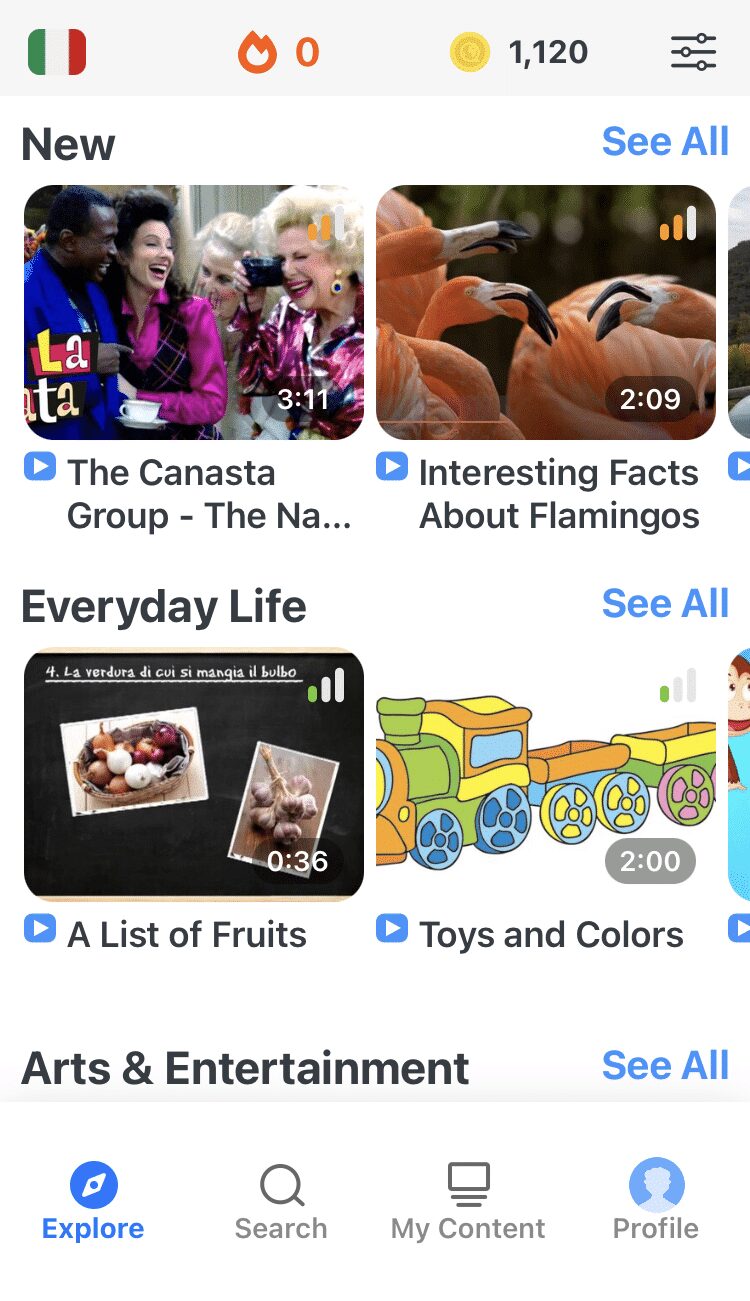
FluentU helps you get comfortable with everyday Italian by combining all the benefits of complete immersion and native-level conversations with interactive subtitles. Tap on any word to instantly see an image, in-context definition, example sentences and other videos in which the word is used.
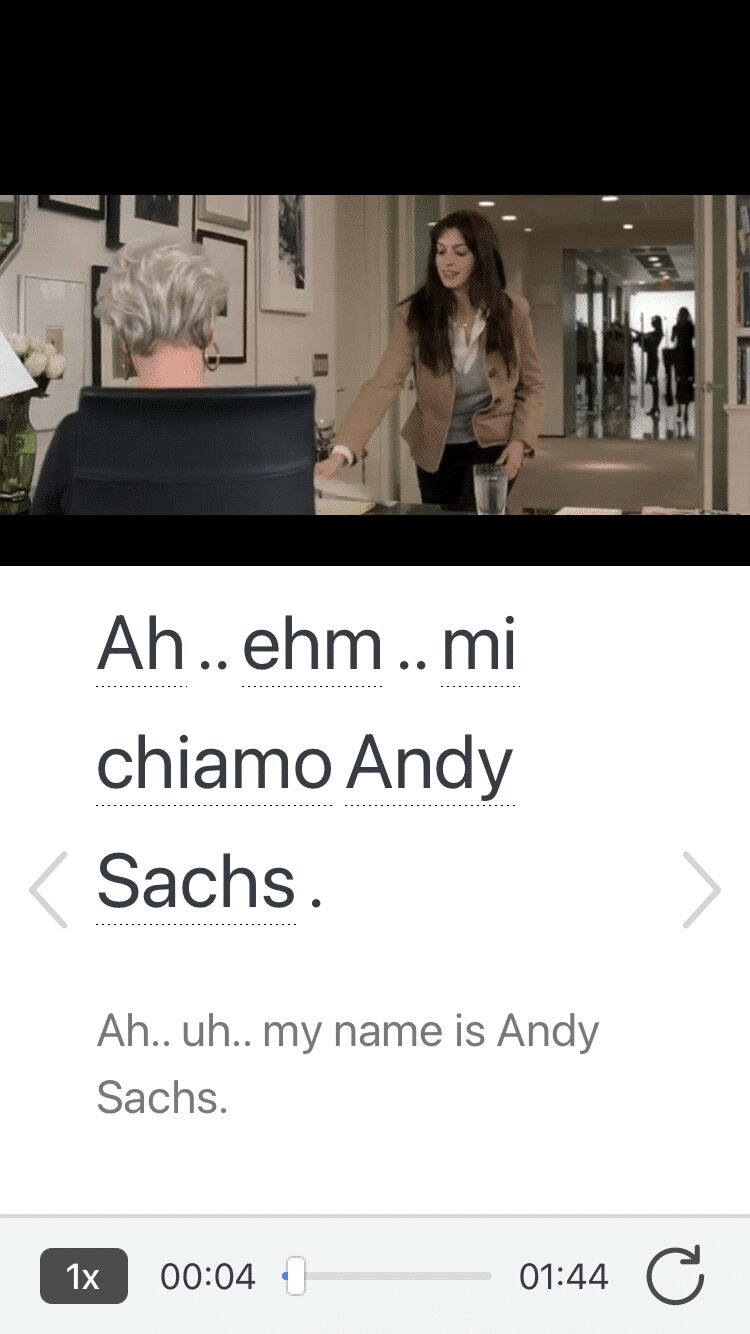
Access a complete interactive transcript of every video under the Dialogue tab, and review words and phrases with convenient audio clips under Vocab.
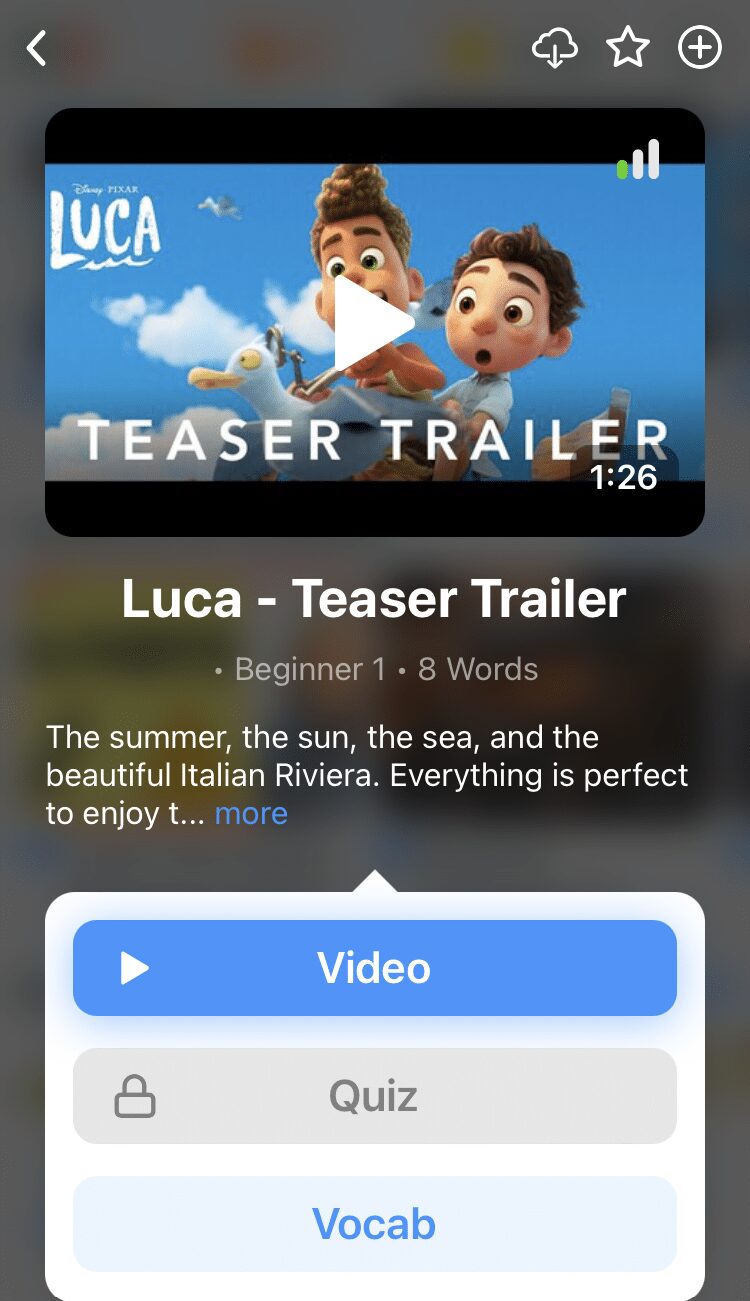
Once you've watched a video, you can use FluentU's quizzes to actively practice all the vocabulary in that video. Swipe left or right to see more examples of the word you’re on.
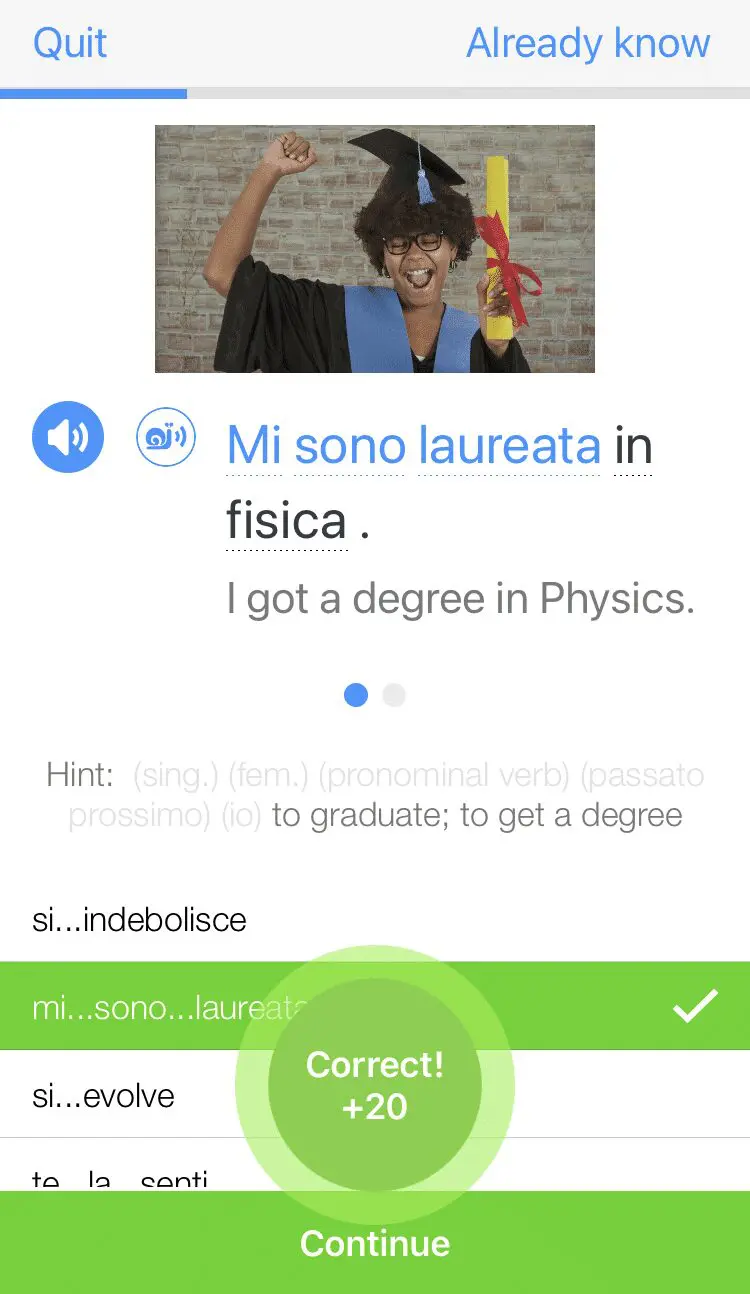
FluentU will even keep track of all the Italian words you’re learning, and give you extra practice with difficult words. Plus, it'll tell you exactly when it's time for review. Now that's a 100% personalized experience!
The best part? You can try FluentU for free with a trial.
Start using the FluentU website on your computer or tablet or, better yet, download the FluentU app from the iTunes or Google Play store. Click here to take advantage of our current sale! (Expires at the end of this month.)

